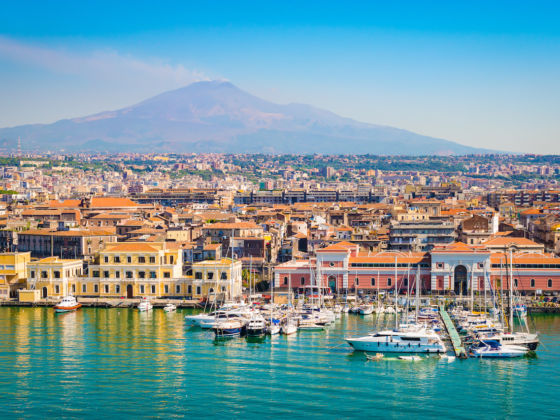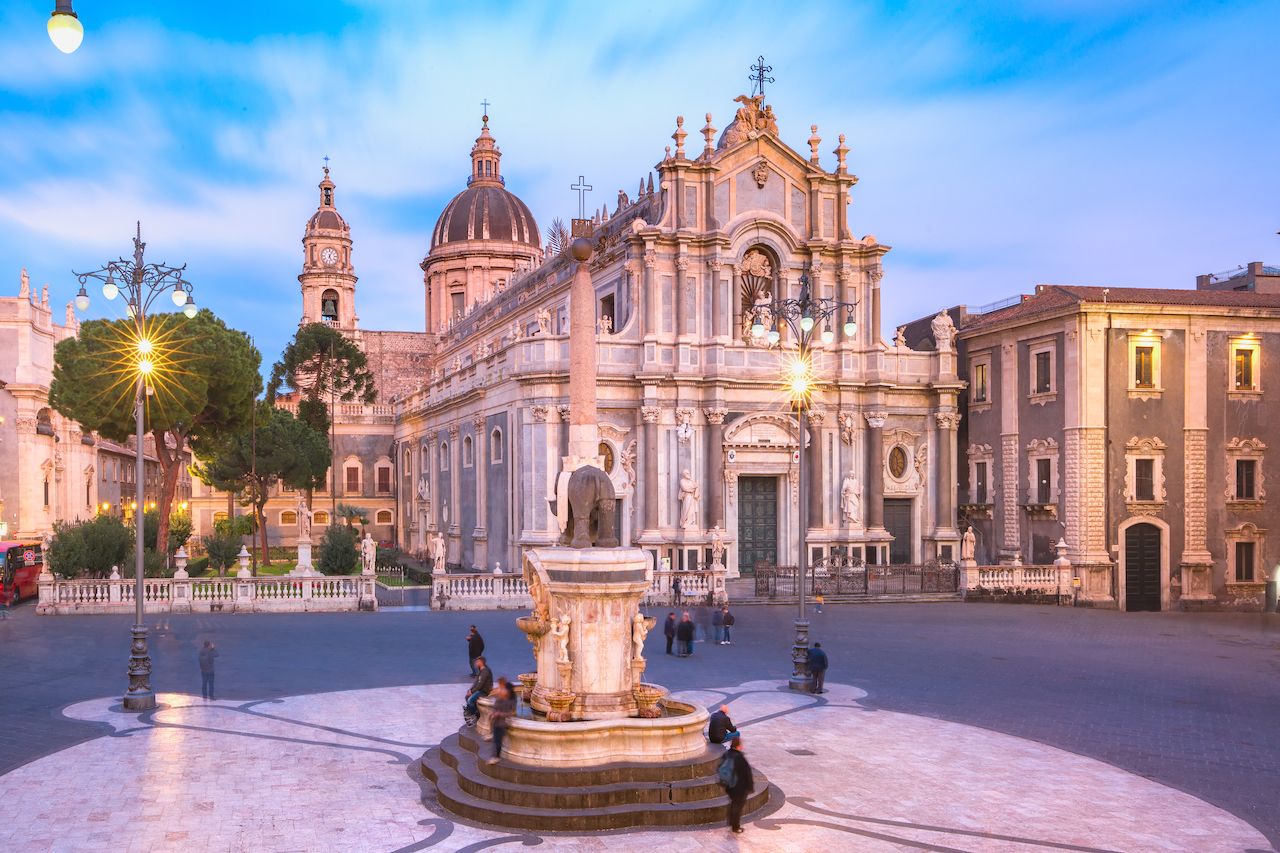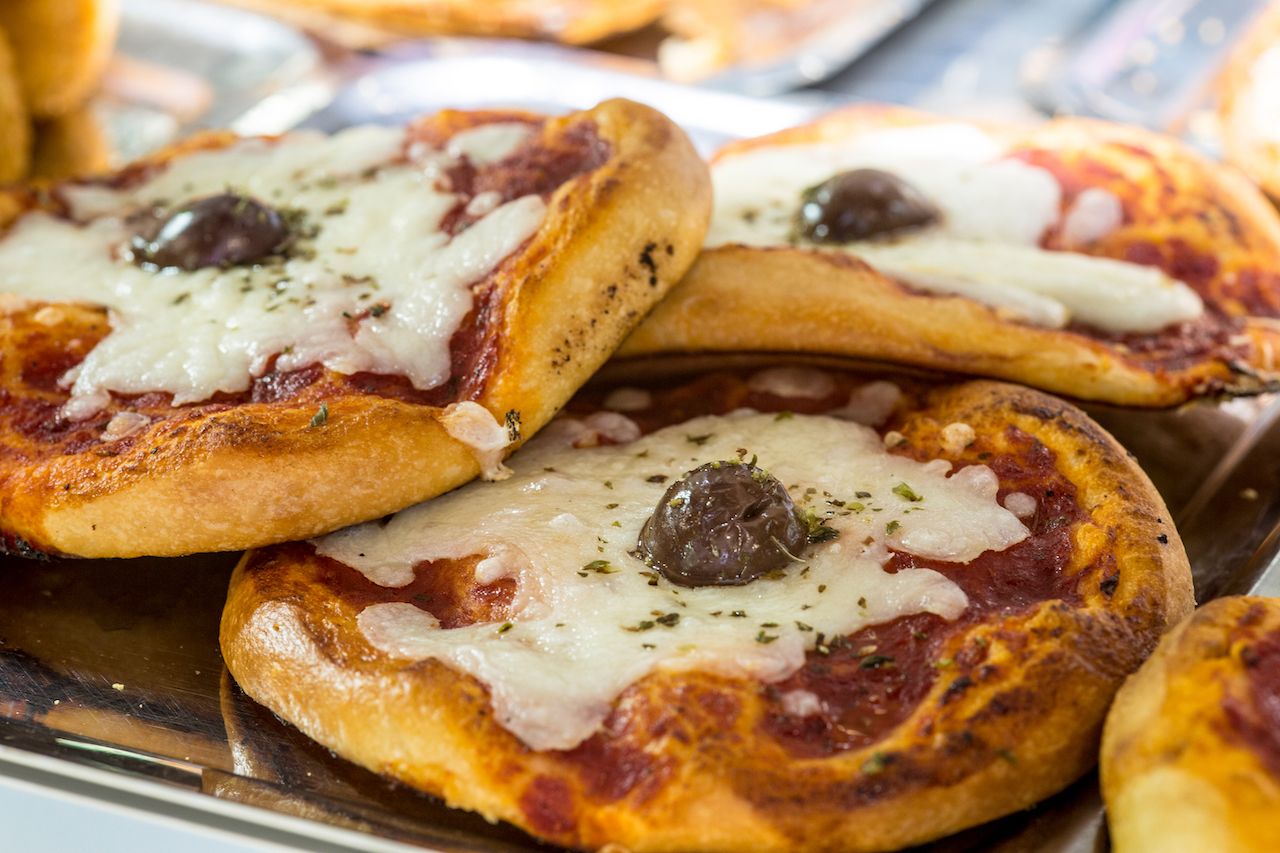When Italy is on the mind, thoughts tend to wander to the most famous places — Tuscany, Milan, Florence, Rome. And while that’s all well and good, Sicily is an equally important part of the country for travelers looking to see and eat their way through the boot of Europe. This is a special place in Italy where history begins and ends with food, where the climate is just incredible, and where people actually smile at you, the friendly tourist. With its three distinct cultures, Catania is Sicily — and maybe even Italy — at its best and most diverse.

Catania in Sicily Is a Blend of Three Distinct Cultures, and It's Beautiful
Catania is two cities in one.

Photo: Sergio Monti Photography/Shutterstock
Located on the eastern seaboard of Sicily island, Catania brings influence from Italy, North Africa, and the Mediterranean. Malta is just south, and it’s actually faster and cheaper to fly to the Tunisian capital of Tunis than to Milan or Rome. The city’s architecture and history landed it on the list of UNESCO World Heritage sites, and taking in the historical buildings is the best way to start your tour of the city. First up is the Monastery of San Nicolò l’Arena, one of Europe’s largest monasteries and an anchor of the city’s facade since the 1500s. The facility is currently in use by the University of Catania’s Humanities Department, so you’re bound to see some locals milling about, and if you’re there at the right time, you can hop on a guided tour. The facility is also located right in the heart of the town, surrounded by hotels and bed and breakfasts. If you stay in the Centro area, you’ll never have trouble getting back to your lodging because every driver in the city knows where the monastery is.
The Teatro Massimo Bellini, an opera house east of the monastery, is another easy stop you can make on a walk through town. Its Baroque style is characteristic of the city’s artistic roots, and while the Bellini cocktail may have originated in Venice, the composer Vincenzo Bellini — who inspired the opera house — was born in Catania. So, ordering one in a cafe here is uniquely appropriate. Whether or not you see a performance, your camera roll is incomplete without the building as a part of it.
Then there are the thermal baths, among the most Italian-Mediterranean aspects of Catania. The Achillean Thermal Baths, the Indirizzo Thermal Baths, the Rotonda Thermal Baths — there’s no shortage and their subterranean locations give Catania a “two cities in one” feel. Generally, you will need a guide or an appointment to visit a thermal bath. Once inside, you’ll head down below street level (and in the case of the Achillean Baths, below the Diocesan Museum) to the spa area. It’s an experience you must try because it sort of feels like you’ve ditched the tourists stuck upstairs in the museum, many of whom seem baffled by the placards written only in Italian. Beyond the baths, there are layers upon layers of buildings buried underground and the consensus among experts is that many remain to be discovered.
Baroque is everywhere.

Photo: kavalenkava/Shutterstock
Catania is home to some of the best examples of Italian Baroque and, because of its tri-cultural influence, the city is a place where different styles meet and greet in the best possible way. Start with Piazza del Duomo, the primary example of Sicilian Baroque. The hub of the piazza is the Catania Cathedral, a massive cathedral that holds the remains of Vincenzo Bellini, and at the center of the square lies the Elephant Fountain, built in the 1700s and now the symbol of the city. The whole of Via dei Cruciferi, the most famous street in Catania, is lined with Baroque buildings which create a fascinating and unique atmosphere resemblant at times of a setting in which you might imagine a Disney protagonist stumbling across on a heroic trek. In continuing the trend of convenience, the piazza is about a 10-minute walk from the monastery. In the same area, the Palazzo degli Elefanti, Palazzo dei Chierici, and the Piazza del Duomo round out the Baroque tour. Allow a morning or afternoon to walk these sites and do some neck stretching beforehand as you’ll want to take photos from many different angles, including upward.
Mediterranean influence crawls along Catania’s coast.

Photo: Arts Illustrated Studios/Shutterstock
San Giovanni Li Cuti is Catania’s city beach and in the grand tradition of Mediterranean beaches, it’s lost in its own world. Imagine Iceland’s black-sand beach but in a far more hospitable climate. San Giovanni features black volcanic sand and rocks and is the place where locals go for a swim on a hot afternoon. It’s also a great place to enjoy fresh local food and the famous movida, or nightlife, of Catania. The pubs start going off around 9:30 PM and if you’re down to party, sleep is an optionable amenity in this part of town. This location is also famous because the fishermen anchor their wooden boats in the small marina, which is quite the setting for a sunrise photo-op.
Catania’s seaside position makes easy to visit the surrounding areas. Start with the Riviera dei Ciclopi, a stretch of coastline just north of the city center that has experienced a rebirth of sorts as tourism has increased in recent years. The beaches are a great place to relax away from the bustle of the city. Aci Castello is set on lava rock with stunning views from an old castle, adjacent to the small fishing village of Aci Trezza. From here you can visit a lava formation known as the Faraglioni Rocks, created when cooling lava was placed in the middle of the sea. You can also get off Sicily on a quick tour to the small island of Lachea.
The fish market is a quintessential Mediterranean experience.

Photo: BlackMac/Shutterstock
The fish market is located in the heart of the city and it’s an iconic place both for locals and tourists. Enter the market via the Baroque Amenano Fountain and you’re hit immediately by the intensely overwhelming scene of coastal smells and the sounds of a working market. Fishermen yell out prices of their fresh fish and negotiate with customers in an auction-like setting — all while engaging in friendly conversation with long-standing regulars and somehow not forgetting about the tourists. They might call you out or toss a sample your way. Everything here revolves around fish, but there are also other market stalls where local producers sell fruits, vegetables, meat, and other local delicacies. Make sure you stop in one of the kiosks to taste seltz, a typical drink made of sparkling water, lemon, and salt that can be flavored in different ways. The market is open Monday through Saturday from about 7:30 AM to around 12:00 PM, though some stalls begin to close up a little before noon.
Street vendors take Italian influence and douse it with African and coastal innovation.

Photo: Wead/Shutterstock
The cuisine of Catania represents the city’s complex tri-fold mix of traditions best of all. Your first meal in town should be cannolo Siciliano. This fried pastry is filled with ricotta cheese and the incredible iris, a huge donut filled with chocolate, custard, pistachios, and more. Spaghetti alla Norma — spaghetti pasta with fried aubergines, fresh tomatoes, and salted ricotta cheese — was invented in Catania as well. A popular light option are cassatine, which are small marzipan spheres filled with ricotta, covered in icing, and topped with a cherry.
Regarding where to find these dishes, Catania is famous for its street food, which can be found throughout the town and is generally far cheaper than dining in a restaurant. Don’t miss out on eating arancino (fried rice filled with meat, fish, or vegetables). In Catania, eating horse meat is a tradition and if you’re an adventurous eater, it’s actually extremely healthy and light when compared to other meat options on the island.
A typical Catanese breakfast consists of granita, a shaved ice dish with brioche served with a sweet bread that is made with eggs and milk. Most popular during summer, you’ll find the shaved ice flavored with pistachio, coffee, or almond.
Mount Etna and Gole dell’Alcantara are quick, outdoorsy day trips.

Photo: Leonid Andronov/Shutterstock
Just north of Catania, Mount Etna is Europe’s largest active volcano. Catania’s history is deeply connected with Etna as it can be seen from nearly everywhere in the city. Today, Mount Etna is almost continuously active with frequent effusive and mildly explosive eruptions. It’s something one should really experience while visiting Catania — if it’s too dangerous, the area surrounding the volcano is closed off. It’s a protected natural park and can be explored independently or with organized tours, based on your level of preparation.
The Gole dell’Alcantara (Alcantara Gorge) is located in a valley in the eastern part of Sicily, between Messina and Catania, and is the real deal if you’re visiting Catania and you like to go off into what feels, at least at first, like the middle of nowhere. Hiking is the attività del giorno here, as there are numerous trails of varying difficulty. Afterward, relax at the small Gorge Beach. You can also go rafting, take a cooking class, or join a guided historical tour of the area.